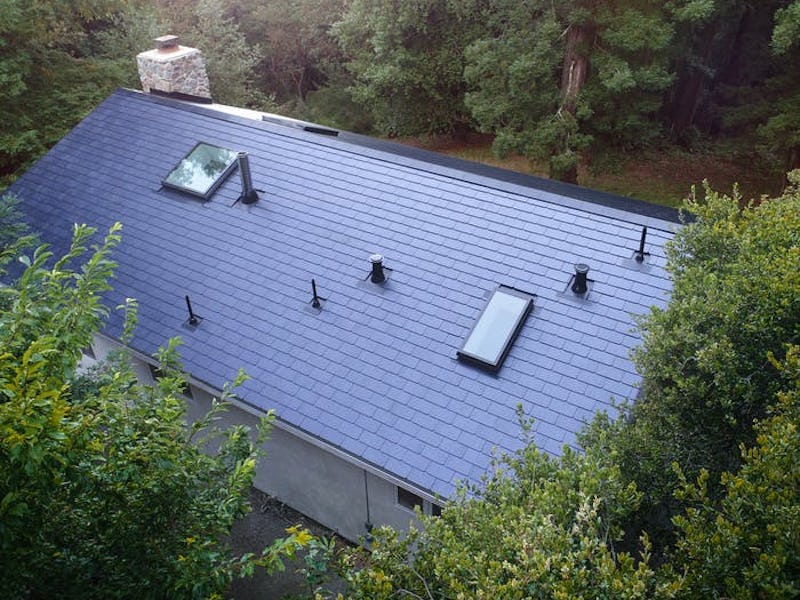Why Tesla Solar Roof Is Unlike Any Previous Tech
Tesla wants to redefine solar panels.

Elon Musk has big plans to change the future of solar. The Tesla solar roof, fully unveiled in August, combines roof tiles that collect solar with regular tiles, creating a seamless roof that stretches all the way across. Orders for the textured black and smooth grey tile styles are expected to start shipping this year, with pre-orders for the remaining Tuscan and slate styles starting in November.
In many respects, the Tesla solar roof isn’t too much different from a traditional solar panel. In some, it’s actually a bit worse. It’s expensive and doesn’t produce as much electricity, with one analysis by EnergySage finding that a solar roof on a 3,000-square-foot home costs $25,000 more than regular panels and produces about 77 percent of the power.
But the key draw is that the solar roof is the roof, and in those situations it may work out as a better deal to buy the solar roof over a roof with solar panels tacked on later. On average, the roof costs $21.85 per square foot. With the savings over the lifespan of the roof, it could prove to be a good deal.
A breakdown of Tesla's roof costs
This is where the magic comes in. Tesla’s innovation on this front is to combine the roof with the panels, allowing consumers to blend the panels in and create a sturdy, long-lasting construction.
Subscribe to the Inverse newsletter. Trust us, we’re from the future.
“This is a connector that has to last for more than 30 years,” Musk said during a call with journalists when the company announced the panels back in May. “It has to be weatherproof, heavy rain, snow, slush, salt, water leaking – it’s like connector hell.”
It’s not just 30 years the panels will last for. Tesla is offering a lifetime guarantee on the roof. Beyond the sturdy connectors, the tempered glass is around three times stronger than slate or asphalt, meaning they can take a serious beating before they break.
The Tesla tile, as shown on the far right
“A lot of the challenges here leveraged some great learning from the Tesla team on validating automotive connectors and volume production processes,” JB Straubel, Tesla’s chief technology officer, said in the same call. “Tesla is building all these tiles ourselves – we are not outsourcing it. We have been able to solve those more complex design problems and hit those price points.”
Tesla used a lot of the expertise from SolarCity team members. The two officially merged last November, valuing the latter company at $2 billion.
“We designed the solar portion of the solar roof to be easier to install than regular solar,” Peter Rive, a former co-founder of SolarCity, said in the call. “We have learned a lot about installing solar from over 300,000 installations so we took all that and included that into the development.”
Perhaps in the future, choosing a solar roof when building a house will become a no-brainer.
The island of Ta’u is now completely solar powered, thanks to Tesla. Check out this video to find out more.